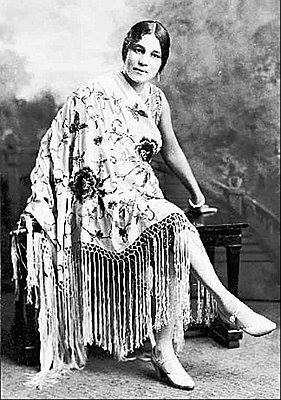GM – FBF – Today, I would like to give you some insight on our
33rd state that entered the Union. Did you know that Oregon was set up as a
place where Blacks were not welcomed? The resulting Article 1, Section 35 of
the Oregon state constitution:
No free negro, or mulatto, not residing in this State at the time of the
adoption of this Constitution, shall come, reside, or be within this State, or
hold any real estate, or make any contracts, or maintain any suit therein; and
the Legislative Assembly shall provide by penal laws, for the removal, by
public officers, of all such negroes, and mulattoes, and for their effectual
exclusion from the State, and for the punishment of persons who shall bring
them into the state, or employ, or harbor them. – I want to share with you a
story of a Black woman who fought to be heard. Enjoy!
Remember – “The object of the National Association for the Advancement of the Colored People as you know is to make 12 million American Negroes physically free from…mentally free from ignorance, politically free from disenfranchisement and socially free from insult.” – Beatrice Morrow Cannady
Today in our History – August 19, 1974 – Beatrice Morrow Cannady dies. (1889 – 1974)
Beatrice Morrow Cannady was the most noted civil rights activist in early twentieth-century Oregon. Using her position as editor of the Advocate, Oregon’s largest, and at times the only, African American newspaper, Cannady launched numerous efforts to defend the civil rights of the approximately 2,500 African Americans in the state (in 1930) and to challenge racial discrimination in its varied forms.
Beatrice Morrow was born in 1889 in Littig, Texas. She reportedly graduated from Wiley College in Marshall, Texas, in 1908, worked briefly as a teacher in Oklahoma, and then enrolled in the University of Chicago, where she studied music. In 1912, she left the city for Portland, Oregon, to marry Edward Daniel Cannady, the founder and editor of the Advocate. Upon their marriage, Beatrice Cannady became assistant editor of the newspaper, beginning an affiliation that would continue for the next twenty-four years; she would become the editor and owner of the Advocate in 1930 after her divorce from Edward. In 1922, at the age of thirty-three, Cannady became the first African American woman to graduate from Northwestern College of Law in Portland. She was one of only two women in a class of twenty-two.
Two years after joining the Advocate, Cannady became a founding member of the Portland NAACP. She quickly emerged as its most powerful voice when she directed the local protest against the controversial anti-black film, The Birth of a Nation. Cannady and other community leaders carried on a fifteen-year campaign to limit the showing of the film. In 1928, NAACP Executive Secretary James Weldon Johnson invited her to address the association’s convention in Los Angeles. In her speech, which followed the keynote by W.E.B. DuBois, she said, “It is the duty of the Negro woman to see that in the home there are histories of her race written by Negro historians. . . . The Negro mother has it within her power to invest less in overstuffed furniture . . . and more in books and music by and about the Negro race so that our youth my grow up with a pride of race which can never be had any other way.”
Through the pages of the Advocate Cannady confronted the racial discrimination routinely practiced by restaurants, hotels, and movie theaters in Oregon and the Pacific Northwest. She successfully challenged the exclusion of African American children from public schools in Longview, Washington, and Vernonia, Oregon, and kept her readers informed of Ku Klux Klan activity throughout the state.
Cannady also assumed the role of unofficial ambassador of racial goodwill, writing articles, giving lectures, and using the new medium of radio to promote African American history and racial equality. Maintaining a collection of over three hundred volumes on African American history and literature, as well as a complete file of leading civil rights organization publications such as the NAACP’s Crisis magazine, Cannady transformed her living room into a reading and lending library about African Americans. In 1929, her efforts were recognized nationally when she was nominated for the Harmon Award in Race Relations, given by the Harmon Foundation in New York City.
Cannady’s activism extended far beyond U.S. race relations issues. She served as a member of the Oregon Prison Association and the Near East Relief Organization and used her affiliation with the Oregon Committee on the Cause and Cure of War to warn Oregonians about the dangers of war and militarism. Cannady also joined the Pan African Congress and in 1927 represented Oregon at its national convention in New York City. In 1932, she ran unsuccessfully for the office of state representative from District 5, Multnomah County.
Six years later, she left Oregon—and public life—when she moved to Los Angeles. Cannady died there in 1974. Research more about Black women freedom fighters and share with your babies. Make it a champion day!

